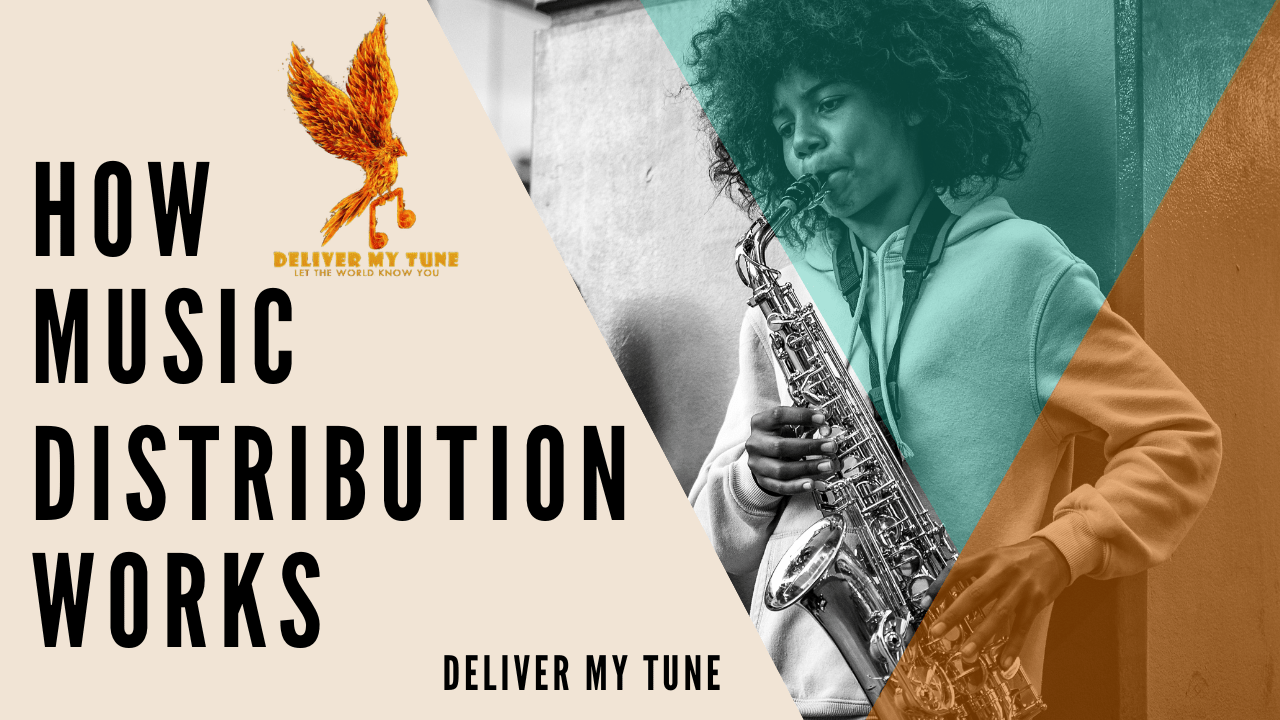If you’ve ever asked yourself, How does my favorite artist’s music reach Spotify, Apple Music, or YouTube? the answer lies in music distribution. In today’s digital age, music distribution is the process that ensures artists of all genres can connect with their audience globally. Understanding how music distribution works is essential for independent musicians, labels, and even aspiring creators to expand their reach.
What is Music Distribution?
Music distribution is the process of making music available to the public through physical or digital platforms. It involves sharing your tracks or albums with global audiences via streaming platforms, digital stores, or traditional physical formats like CDs and vinyl.
Modern music distribution has evolved dramatically from the days of traditional record stores. Today, a digital-first approach dominates, offering artists unprecedented control over their careers.
Why is Music Distribution Important for Artists?
- Global Accessibility: Music distribution ensures that your tracks are available worldwide, helping you grow your fan base beyond geographical boundaries.
- Royalties and Revenue: Distributors facilitate earning royalties from streams, downloads, and synchronization licensing.
- Professional Growth: Being present on platforms like Spotify and Apple Music establishes your credibility and visibility.
- Creative Freedom: Digital distributors give independent artists the flexibility to release music without waiting for label approvals.
A Brief History of Music Distribution
Music distribution has transformed significantly over decades. Let’s take a quick look at how it all began:
- Physical Distribution Era: In the early 1900s, music reached listeners through vinyl records and later cassettes and CDs. Physical distributors partnered with retail stores to sell albums.
- Digital Revolution: The rise of Napster in the late 1990s disrupted traditional distribution models, leading to the birth of platforms like iTunes.
- Streaming Era: Today, platforms like Spotify and Apple Music dominate, with billions of streams daily, making music accessible on demand.
This shift to digital has democratized music distribution, allowing even unsigned artists to share their creations globally.
How Music Distribution Works: A Step-by-Step Guide
1. Create Your Music
Before you distribute, focus on producing high-quality tracks. This includes:
- Recording: Capture your sound in a professional studio or with quality home setups.
- Mixing and Mastering: Balance and enhance your music using tools like AI Mastering platforms, including services from Deliver My Tune.
2. Choose a Distributor
Distributors act as middlemen between artists and streaming platforms. They handle licensing, metadata, and platform uploads.
Here’s how to choose the right one:
- Budget: Some distributors charge a flat fee, while others take a percentage of your royalties.
- Platform Reach: Look for distributors covering 100+ platforms, such as Deliver My Tune, TuneCore, or DistroKid.
- Additional Services: Features like playlist pitching, AI mastering, and royalty tracking add value.
3. Upload Your Music
Once you’ve selected a distributor, upload your tracks along with essential metadata, including:
- Song title and artist name.
- Album artwork (ensure it meets platform-specific guidelines like those in Apple Music’s Style Guide).
- Release date and genre information.
4. Distribute to Streaming Platforms
Your distributor will deliver your music to platforms like Spotify, Apple Music, YouTube Music, and Amazon Music. Depending on the distributor, this can take anywhere from 24 hours to several days.
5. Promote Your Release
Distribution alone isn’t enough. Pair it with promotional efforts such as:
- Social Media Campaigns: Leverage Instagram, YouTube, and TikTok.
- Playlist Submissions: Pitch your songs to curators for higher visibility.
- Countdown Pages: Spotify’s new Countdown Pages help build pre-release hype.
6. Monitor Performance
Use analytics tools provided by your distributor to track:
- Stream counts and revenue.
- Audience demographics and engagement.
- Playlist additions and chart performances.
The Benefits of Digital Music Distribution
- Cost-Effectiveness: Unlike physical distribution, digital platforms eliminate expenses like manufacturing CDs or vinyl.
- Real-Time Analytics: Platforms like Spotify for Artists and Apple Music give you insights into listener data.
- Unlimited Reach: Your music is accessible to listeners across continents within seconds.
- Ease of Use: Most digital distributors offer user-friendly dashboards for uploads and tracking.
Challenges in Music Distribution
Despite its many benefits, music distribution has its challenges:
- Oversaturation: Millions of tracks are released daily, making it difficult to stand out.
- Earnings Transparency: Understanding royalty splits can be confusing.
- Promotional Dependency: Success heavily depends on post-release marketing efforts.
Best Practices for Effective Music Distribution
1. Optimize Metadata
Accurate metadata ensures your music is searchable. Follow these tips:
- Use consistent artist names.
- Include genre-specific keywords.
2. Pitch to Playlists
Getting featured on curated playlists can increase streams significantly.
3. Regularly Update Profiles
Keep your Spotify and Apple Music profiles updated to maintain professional credibility.
4. Invest in Quality Visuals
Eye-catching album art increases the chances of your music being noticed.
Types of Music Distribution
1. Traditional Distribution
This involves physical copies being shipped to record stores. While not as common today, it’s still relevant for vinyl releases.
2. Digital Distribution
The most popular method, digital distribution, connects your music with streaming platforms and online stores.
3. Hybrid Distribution
Combining physical and digital methods, hybrid distribution caters to diverse audiences.
Top Music Distribution Platforms
1. Spotify
Known for its extensive reach and tools like Countdown Pages for pre-release marketing.
2. Apple Music
A great choice for quality-focused artists, offering excellent metadata tools and user experience.
3. DistroKid
Ideal for independent musicians, offering unlimited uploads for a flat fee.
4. Deliver My Tune
A one-stop solution for music distribution, AI mastering, and royalty management.
5. YouTube Music
An excellent platform for combining video and audio content, perfect for visual artists.
The Future of Music Distribution
The music industry is constantly evolving, with innovations like AI-driven tools and personalized recommendations shaping the future. Some trends to watch include:
- NFTs and Blockchain: Decentralized platforms offering transparency in royalties.
- AR and VR Concerts: Music paired with immersive experiences.
- Hyper-Personalized Marketing: Data-driven targeting to connect with niche audiences.
How to Choose the Right Distributor
When selecting a distributor, consider:
- Fees: Flat fees vs. royalty splits.
- Reach: Global platform coverage.
- Support Services: Tools like playlist pitching, profile updates, and marketing assistance.
Conclusion
How music distribution works is no longer a mystery. It’s a vital process that ensures your music reaches the right ears. Whether you’re an emerging artist or a seasoned pro, understanding this ecosystem can significantly impact your career.
Focus on creating quality music, selecting the right distributor, and leveraging marketing strategies to maximize success. The world is ready for your sound—now’s the time to distribute!
Related Articles:
For further reading, explore these related articles:
- Exploring the Latest Instagram & Facebook Updates for Artists in 2024
- 5 Music Marketing Tips for Indie Artists
- How Can Musicians Keep Themselves Engaged During COVID-19?
For additional resources on music marketing and distribution, visit Deliver My Tune.






